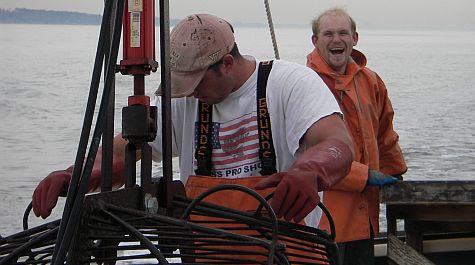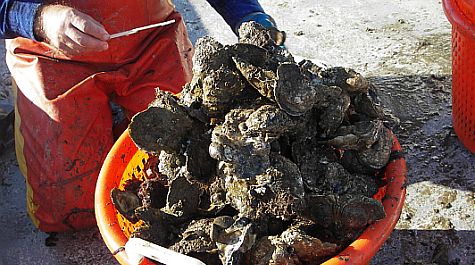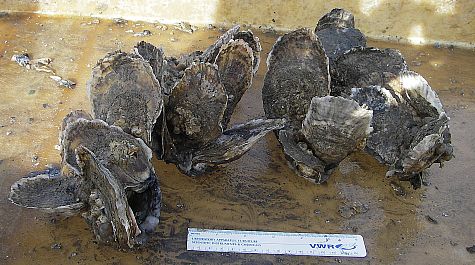Molluscan Ecology Monitoring & Advisory
The monitoring data that we collect is used to help guide fisheries management and the industry as well as to assess the effects of restoration efforts.
Programmatically, we have been in the business of monitoring Virginia’s oyster resources since the 1940s. In recent years, collaborative agreement with the Virginia Marine Resources Commission (VMRC) Conservation and Replenishment Department have led to continued oyster monitoring as well as oyster stock assessment and restoration activities throughout Virginia waters. Collaborations with VMRC have also allowed us to begin periodic monitoring of local hard clam resources. Current monitoring efforts include:
Oyster DredgeThis survey has been conducted annually in the fall since the 1940s and has been a collaborative effort between VIMS and VMRC since the |
Oyster Patent TongThis survey has been conducted annually in the fall since 1993 in collaboration with VMRC. The patent tong survey is a quantitative survey that provides information about |
Oyster Shellstring (
|
Virginia Oyster Productivity Information Tool (best viewed in Firefox or Safari browser)The most rapid expansion of the aquaculture industry in Virginia has been in hatchery-based production of cage-cultured oysters on private grounds. Conflicts have arisen between new user groups residing along the Chesapeake Bay shore, and a growing industry that works primarily in nearshore waters. Additionally, as the shoreline has been developed, there are very limited access points along the waterfront where commercial activity can occur. This study has characterized the oyster industry as it exists today, examined the regulatory framework, and closely examined major issues that impact future expansion. |
Rapa Whelk (Rapana venosa):Monitoring of the predatory invasive rapa whelk as by-catch is being re-established after a 10 year hiatus in collaboration with Dr. Michael Unger, VIMS, as he compares changes in sediment tributyltin (TBT) levels in the same area of the Hampton Roads region. TBT acted as a genetic mutagen of the rapa whelk. After it was banned in 2009, levels of TBT have slowly dropped and in conjunction, the capacity of rapa whelk to repopulate has increased. Data collected from this study will be used to advise watermen and environmental regulatory agencies on how to manage this aquatic invasive. |
|
VOSARA |



